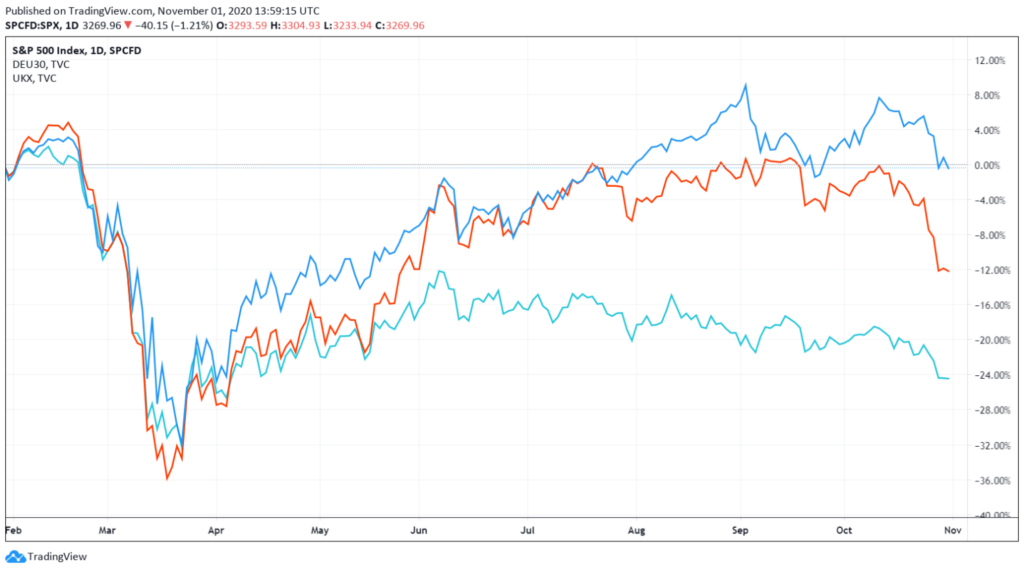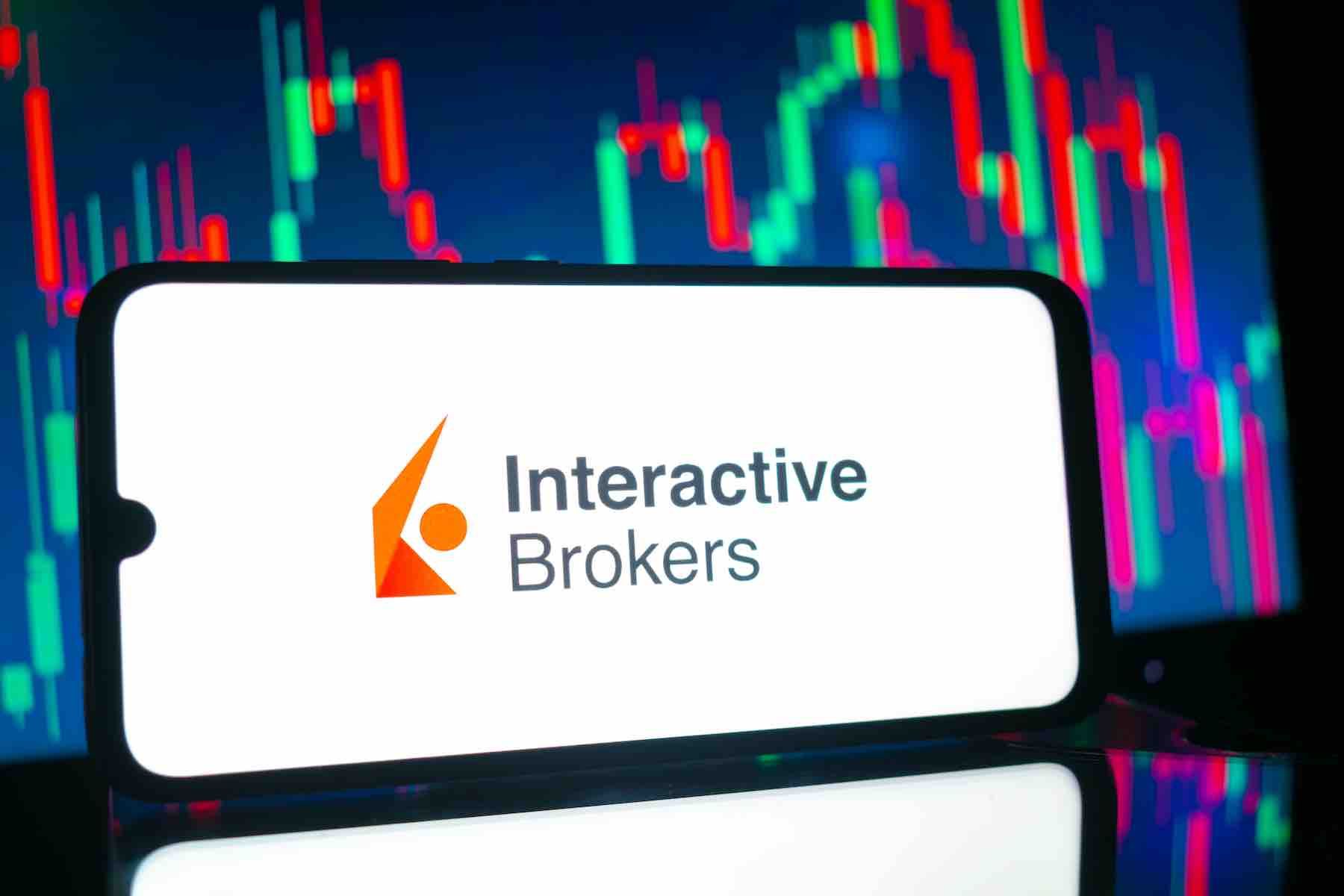The current scenario across financial markets looks ready for an acceleration in equity prices to the downside. In Europe, it has already started. Will Wall Street follow European indexes?
This week there are many key events ahead. Three of the most relevant are: 1) U.S. election 2) Federal Reserve meeting and 3) Non-farm payrolls. Whatever the Fed does, is not going to shock markets. The current state of the economy does not allow for any sign about less accommodation; it is the opposite. The impact of any announcement would not be seen as a surprise.
Many analysts see the U.S. election as a significant risk, mainly if there is no clear winner during the morning of Wednesday or if President Trump does not recognize the results. The positive outcome for certainty, and not necessarily for markets, would be a landslide victory of any of the two candidates.
The results of the election, no matter which one, could trigger or be used as another reason to resume a decline in Wall Street. Practically any event next week might be seen as an opportunity to sell, considering the environment. The election, economic data and the FOMC meetings are among them.
A bad week

Wall Street and global stocks just ended the worst week since March after falling in four out of the past five days. The S&P 500 lost 5.6% over the week. The S&P 500 chart shows the index looking increasingly bearish after another failure at 3,500, holding below the 20-week moving average and around an important technical area between 3,200 and 3,280. From a technical perspective, under 3,200, the immediate target could lie around 3,140 and then, not much until 3,000. The positive outcome for the S&P 500 would be to remain above 3,300 that could lead to an approximation to 3,425. A rally above 3,500 looks unlikely at the moment considering investor’s confidence.
Robert Shiller, a novel-winning economist and Sterling Professor of Economics at Yale, warned that low investor confidence and high prices increase the risk of a market crash. “No one knows the future, but given the general lack of investor confidence amid a pandemic and political polarization, there is a chance that a negative, self-fulfilling prophecy will flourish. This highlights the importance of being well diversified in asset classes — including Treasury securities, which are safe — and not overexposed to U.S. equities now.”
Volatility and Europe, another warning sign for U.S. stocks

The VIX index rose at the fastest pace last week in months. Higher volatility is a negative sign for stocks. The peak in the VIX was the recent bottom in stock indexes across the globe. The key over the next few days is whether or not the index makes higher highs, independent of the direction in the price of equities. A decline in volatility would suggest less negative risk.


European indexes (German’s DAX, France’s CAC and UK’s FTSE 100) dropped to multi-month lows last week. Could it be an anticipation of what could happen to U.S. stocks? The recovery from the March bottom was more robust in the U.S., and the current correction is being more gradual.
The lack of expectations about a V-shape economic recovery was among the reasons that capped the upside in European shares over the last months. The resurgence of coronavirus cases in Europe triggered the ongoing decline. Every day, more countries are introducing restrictions to ease the pandemic. The last one was UK Prime Minister Boris Johnson announcing a second national lockdown in England from this Thursday until December 2.
New restrictions and lockdowns in Europe, means that the return to the pre-COVID 19 normality (at least in terms of economic indicators) will take more time than previously expected. It also means that a new wave in other regions of the world, could lead to more restrictions, having negative economic consequences, probably not as bad as those seen in the first round of lockdowns.
Will Wall Street’s indexes follow its European peers? It could be, but the current outlook and technicals show there is more fragility in European stocks and that a crash in the U.S. could hit them even harder. Emerging market currencies have also started a negative rally that could weigh on global sentiment.
Downside risks for stocks are on the rise and markets could tumble in the days ahead using the supposedly crucial events, as an excuse to sell. The main negative factors might be the resurgence in COVID cases and stock valuation and the fact that all the tools to stimulate the economy are being used. Policymakers say there is room for more action. But how much money and debt could capital markets tolerate before a crisis?













